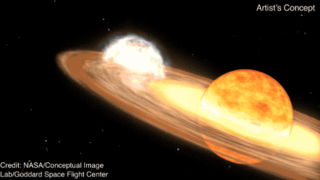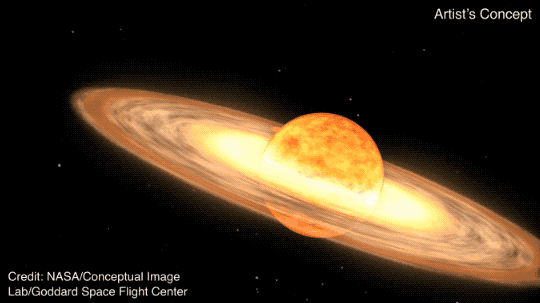
A nova outburst located more than 3,000 light-years away will be visible to the naked eye when it decorates the night sky this year, offering stargazers a once-in-a-lifetime opportunity.
This rare space phenomenon occurs when a white dwarf star and red giant are close together. As the red giant sheds its outer layers, the white dwarf absorbs that matter on its surface until it eventually overheats, triggering a thermonuclear reaction, also known as a nova outburst, according to NASA.

It's expected to shine as bright as the North Star, Polaris, when it explodes some time between now and September 2024, according to NASA. Once its brightness peaks, it will be visible to the naked eye for several days before it dims again.
Get San Diego local news, weather forecasts, sports and lifestyle stories to your inbox. Sign up for NBC San Diego newsletters.
"The star system, normally magnitude +10, which is far too dim to see with the unaided eye, will jump to magnitude +2 during the event," NASA said in a news release.
The star system at the center of this event is called T Coronae Borealis, or T CrB, and sits in the constellation Corona Borealis. When the outburst occurs, it will appear as a "new" bright star in the North Crown, which is a small arc between the constellations Bootes and Hercules.

The nova outburst only occurs about every 80 years, last exploding in 1946. It was also documented once before in 1866.

